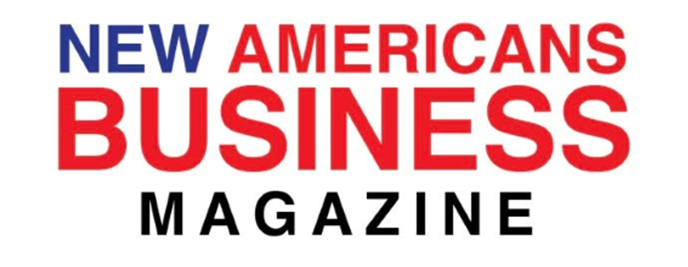
Small businesses in Ohio saw increased economic activity to the tune of $5.9 billion in 2018, when compared to a model of Ohio’s economy in which the Business Income Deduction, BID did not exist, according to a report of the Ohio Chamber of Commerce Research Foundation in a study conducted by Ernst & Young.
“The economic activity supported by the existence of the BID led to the employment of over 59,000 Ohioans, including more than 14,000 Ohioans employed by small businesses (classified as businesses with fewer than 50 employees),” said the report “Economic Impact of the Business Income Deduction in Ohio”
“The study suggests that the tax savings business owners experience through the BID may have helped roughly 1,200 businesses keep their doors open in 2018, compared to an Ohio economy in which the BID did not exist.”
The Ohio Chamber of Commerce Research Foundation paired with the Ernst & Young (EY) to conduct “Analysis of Ohio’s Business Income Tax Incentives,” which represents the first comprehensive economic impact analysis of the Business Income Deduction (BID) in the state of Ohio.
“The study suggests that the tax savings business owners experience through the BID may have helped roughly 1,200 businesses keep their doors open in 2018, compared to an Ohio economy in which the BID did not exist.”
“The analysis completed by EY shows that the Business Income Deduction has had a positive impact on Ohio’s economy. These provisions have proven to be effective in incentivizing small businesses to reinvest their tax savings into their companies,” said Brian Hicks, President of the Ohio Chamber of Commerce Research Foundation Board of Directors.
With the help of our project partners, we sought to provide a data-driven, non-partisan analysis of the BID and determine the value it has provided to Ohio’s economy across multiple sectors.
“The Business Income Deduction (BID) is an important reinvestment tool for dealers. Anyone who has driven by their local dealership lately has seen first-hand the reinvestment dealers have made for the betterment of their employees, customers and communities,” said Ohio Automobile Dealers Association President Zach Doran.
“Small business owners across Ohio, including the more than 36,000 Realtors throughout the state, benefit from the small business income deduction. Realtors use this important tax tool to reinvest in their businesses and help grow the Ohio economy every day,” said Scott Williams, Chief Executive Officer of Ohio Realtors.
“Ohio’s Business Investor Deduction (BID) has been critically important to the small business community. It will continue to be vital to their survival as they rebound from the pandemic where many saw sales drop off by over 25 percent, with some seeing a hit of 50 percent or more. The study makes a clear case for maintaining the BID as Ohio realized an increase of $5.9 billion in Gross State Product and grew 14,000 small-business jobs due to its impact. It proves once again that with this important tax reform small businesses reinvested in their local communities,” said Roger Geiger, NFIB Executive Director for Ohio.
“Ohio CPAs, key advisors to thousands of small business entrepreneurs in our state, know more than most how critically important Ohio’s Business Income Deduction has been in fueling the growth of new and existing small businesses. The BID has enabled small business entrepreneurs to keep more of their own hard-earned money, which in turn drives economic development through footprint expansion, the purchase of new equipment, hiring more staff and enhancing employee benefits,” said Scott Wiley, OSCPA President & CEO.
“Fueling entrepreneurs with a favorable tax and business environment is the key to growing and creating small businesses. This study clearly demonstrates the positive impact that the BID has in helping the heart of the Ohio’s economy, our small businesses and why it is such a valuable tool for employers doing business in Ohio,” Jeff Smith, CEO of Ohio Insurance Agents, said.
“The ability of small businesses to keep more of their income and reinvest in their operations is central to the success of Ohio’s economy. This report shows that small businesses were able to keep their doors open and spur economic growth thanks to the BID.” – Bridget McAuliffe, President, Ohio Lobbying Association
“The Toledo Regional Chamber of Commerce was pleased to collaborate with partners from across Ohio to understand the impact of the BID on small businesses. It is clear from the results of this study that the BID is providing assistance to the economic backbone of our communities, our small businesses” said Brian Dicken, Vice President, Advocacy and Strategic Initiatives, Toledo Regional Chamber of Commerce
“As Ohio heads closer to the recovery phase, it will need every tool available to continue supporting economic growth and job creation. This important research demonstrates that the state’s policy on business income incentives is helpful to our overall business environment,” Joe Savarise, Executive Director of the Ohio Hotel & Lodging Association, said.
“The Business Income Deduction (BID) has helped ensure wholesale businesses are able to reinvest in their companies, and I’m pleased to see the report confirm the beliefs we hold about the positive impact of these provisions,’ said Jacob C. Evans, Counsel for Legislative Affairs for the Wholesale Beer & Wine Association of Ohio.
“Enabling growth and success for small businesses is key to the economic vitality of our state and this study shows that the current business income deduction is one of the building blocks for that support. COVID-19 devastated the small business community and hit minority owned businesses especially hard. Especially now, we need to continue to position our small businesses to survive and thrive,” said Steve Millard, President & CEO of the Greater Akron Chamber.
The report also highlights the lack of existence of the so-called “LLC Loophole.” The suggestion has been made that business owners can multiply their deduction and claim more than the $250,000 cap by splitting their operations across several business entities. As the report clarifies, the deduction is applied just once to an individual tax return regardless of the number of businesses claimed by a taxpayer on their returns.
“The BID has long been a public policy priority for the Ohio Chamber. We are pleased that the study clarifies some misconceptions that have persisted regarding the BID, and demonstrates that these provisions are working as intended to support Ohio’s economic growth,” said Andrew Doehrel, President & CEO of the Ohio Chamber of Commerce
EY’s assessment of the impact of the BID was conducted through a fixed-effects model, highlighting the differences in tax policy on business income in Ohio prior to the enactment of the deduction and rate reduction in 2015 and comparing them to the latest data available in tax year 2018.
Controlling for variables such as the economic and demographic makeup of the state and trends in the national economy, the model is able to highlight the impact of the BID by demonstrating what Ohio’s economy might look like were the BID not in effect. The effects implied through that model demonstrate the positive correlation between the existence of the BID and increased economic activity in Ohio.





